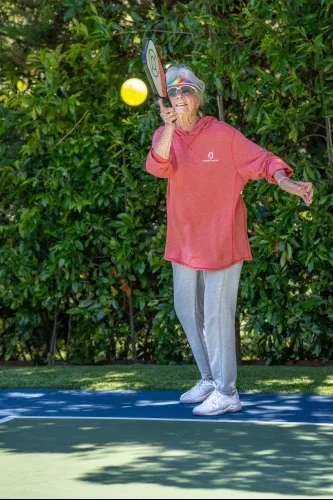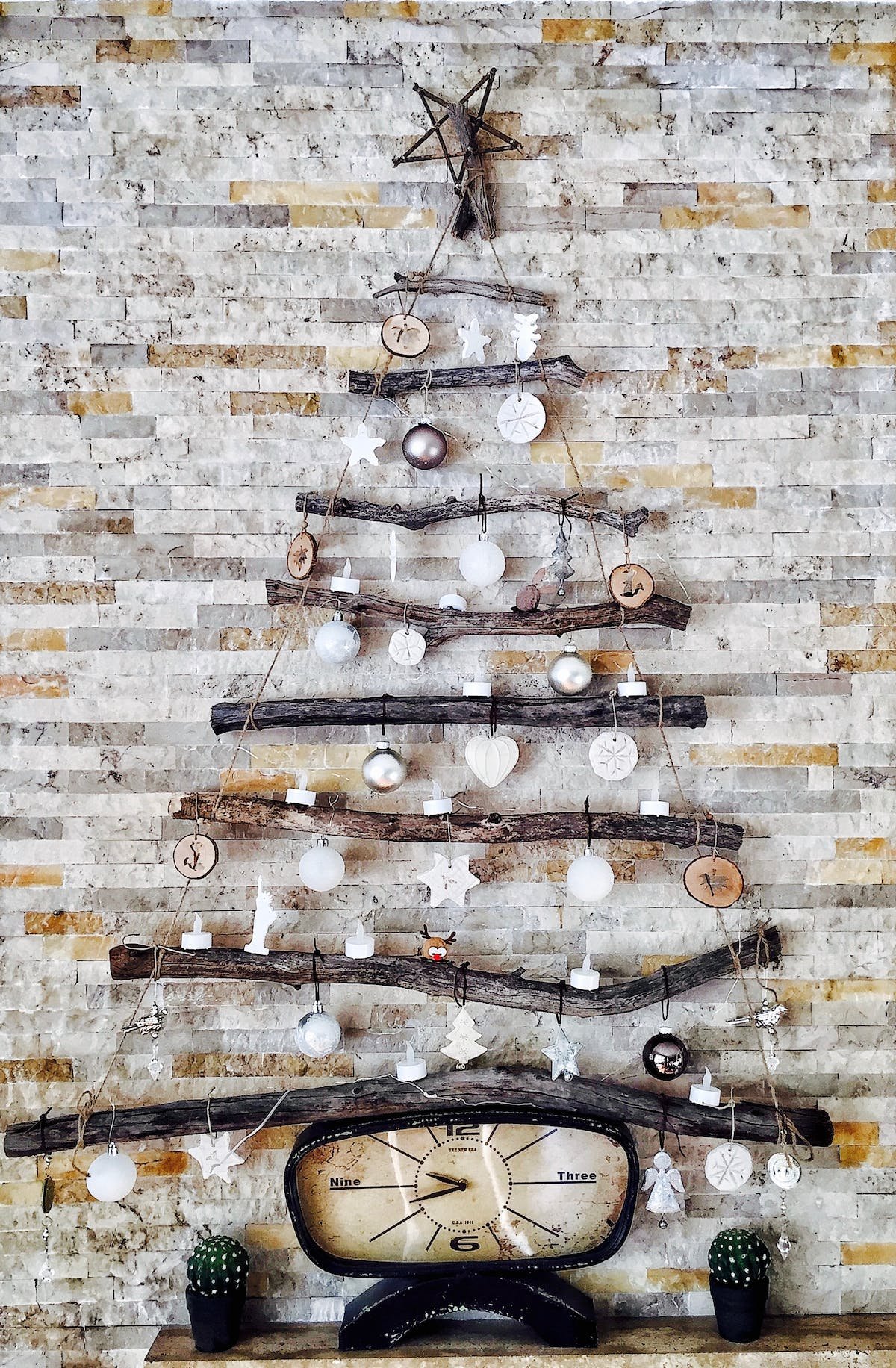Relish Pickle Ball. It’s for Everyone!!! …..The Ultimate Inclusive Game…..
Relish Pickle Ball. It’s for Everyone!!! …..The Ultimate Inclusive Game…..
Under lockdown, Americans of all ages have been spicing things up with a fun new pastime.
Written by Diane Krieger | Photographed by Steve Taylor
Originally published January 2022
Lara Marmelstein had been a highly ranked (5.0) tennis player for more than 30 years when a buddy introduced her to a new racquet sport with a silly name: pickleball. The 54-year-old nurse from San Juan Capistrano was instantly hooked.
“I love, love, love, love pickleball!” Marmelstein gushes. “I love it so much that I gave up tennis. I look forward to playing pickleball until I’m 100.”
She means that literally. With its compact court and low-force volleys, pickleball is senior-friendly and uniquely well-suited for intergenerational play.
“There’s less emphasis on running than in tennis. You can sort of hop over to one side or the other. That’s why older people and children can play,” says Marmelstein, who took up pickleball in 2015.
She had no trouble selling her 85-year-old mother, Mary Lou McCauley, and sister Kelley Mayeda on the sport. The fever quickly spread to Mayeda’s adult sons, Mac and Jacob, and Marmelstein’s own adult children, Mitchel and McKenna. Another sister, Marlo Blandford, and brother-in-law Johnny have since embraced the family pastime.
Marmelstein, who worked at Torrance Memorial for a decade before moving to Orange County in 2000, returns to the South Bay every week. By long-standing tradition, she and her siblings, their spouses and offspring gather on Thursdays at mom’s house in Redondo Beach for “family night.” Then bright and early Friday morning, these self-described “pickleheads” take to the courts at Manhattan Heights Park or Hermosa Beach.
“It’s such a neat thing that I can play with my 85-year-old mom and my 30-year-old nephew. I could never do that in tennis,” says Marmelstein, who plays pickleball five times a week. Her skill-level rating is 4.5 on a scale of 6. Pro level starts at 5.5.
Marmelstein’s three-generation, pickleball-loving family is part of a trend sweeping the nation. According to the Sports & Fitness Industry Association, pickleball grew to 4.2 million players in 2020—up from 3.5 million in 2019. That’s just in the United States. Forty-eight other member countries belong to the International Federation of Pickleball, which aims to take the sport to the Olympics.
Already one of the fastest-growing sports before the pandemic, pickleball exploded in popularity as rec centers, health clubs and public parks closed for much of the year. “You can play pickleball anywhere, really. People play in their cul-de-sacs. That’s what we did throughout COVID-19,” Marmelstein says.
All you need is a 20-by-44-foot paved surface, sidewalk chalk, a portable net, paddles and the sport’s signature plastic ball resembling Swiss cheese. (A starter kit of four paddles, balls and net will set you back about $100.)
Combining elements from badminton, tennis and ping-pong, pickleball is played on a badminton-sized court (or one-quarter of a tennis court) using a net that is near tennis height.
“It’s super easy to learn,” says pickleball enthusiast Steve Taylor, 53. “A single lesson is enough to start you playing.” Taylor’s sport of choice before he got bitten by the pickleball bug had been volleyball—but he’s an outlier. Four of five pickleball players come from tennis or other racquet sports, he says.
A professional videographer, Taylor discovered the game while filming content for the Pickleball Channel on YouTube in 2015. Since then, pickleball has taken over his professional and personal life. Now nearly all his clients are pickleball organizations. “The sport is blowing up. Everybody needs photos and video,” he says.
When he isn’t shooting tournaments, pro tours or feature articles for Pickleball Magazine, Taylor is usually swinging a paddle. He plays six days a week, three to five hours a day, across the South Bay and Orange County. He also teaches private and group lessons on various local courts. “I’m just heavily addicted,” he says, laughing.
What makes pickleball so addictive? “The secret sauce—and the reason the intergenerational stuff works—is because pickleball is very easy to learn, very easy to play and it’s super social,” Taylor says.
The social aspects are baked in. The small court size encourages chit-chat between partners and opponents. A single-match rule in drop-in open play promotes ever-changing player combinations because a new foursome takes the court after each set. A paddle queuing system keeps track of who’s up next. If you show up alone, your paddle is randomly paired with another in the queue, sparking new friendships.
“That’s what makes pickleball so great. I love all the people I get to interact with,” Taylor says.
Don’t be fooled by pickleball’s ease of play. As one grows into the sport, strategy and technique become crucial—which is why hard-bitten competitors like Marmelstein and Taylor can never get enough.
“If you play it well, you’re moving all the time,” says Marmelstein. “It’s exhausting. Just watch some pro videos and see how fast and accurate and athletic they are—what amazing hands they have!”
The sport currently has three major tournaments: Margaritaville USA Pickleball Nationals at Indian Wells, California; the US Open in Naples, Florida; and the Tournament of Champions in Brigham City, Utah. Two pro tours—one with 18 stops, another with 12—pay purses up to $125,000, and top players clear more than $200,000 a year between winnings, brand sponsorships and clinics. Level Up, one of the sport’s premiere academies, runs three-day training camps in 90 cities.
Tournament age brackets go from preteens to seniors. One of the world’s top pro players is 14-year-old Anna Leigh Waters of Delray Beach, Florida.
Pickleball History
Pickleball was invented in 1965 by Joel Pritchard, a six-term U.S. congressman from Seattle, at his vacation home on Bainbridge Island, Washington. He and two other dads created the sport as a way to entertain their kids who complained of having “nothing to do.”
According to the Pickleball Hall of Fame, the sport was possibly named for the Pritchard family dog, Pickles, who absconded with stray whiffle balls. By another account, the name was coined by Pritchard’s wife, Joan. The mash-up of three racquet/paddle sports reminded her of “pickle boats” in crew, where oarsmen are chosen from the leftovers of other boats.
Where to Play
According to USA Pickleball, there are more than 34,000 pickleball courts in America. Here are some South Bay options:
Manhattan Heights Park
Walteria Park Senior Center
Hermosa Beach
Wilson Park
El Segundo Parks and Rec
Sur La Brea Park
A free introductory class—open to all ages—is held at Walteria Park every Monday and Thursday at 9 am. It’s hosted by the USA Pickleball ambassadors program, a volunteer group devoted to growing the sport. For details, contact Torrance ambassador Debbie Martin at 310-892-3008.
To find more courts, go to Places2Play.org and enter your city in the search window. Local USA Pickleball ambassadors, who keep the database current, can be reached by email through the website
Related Articles









